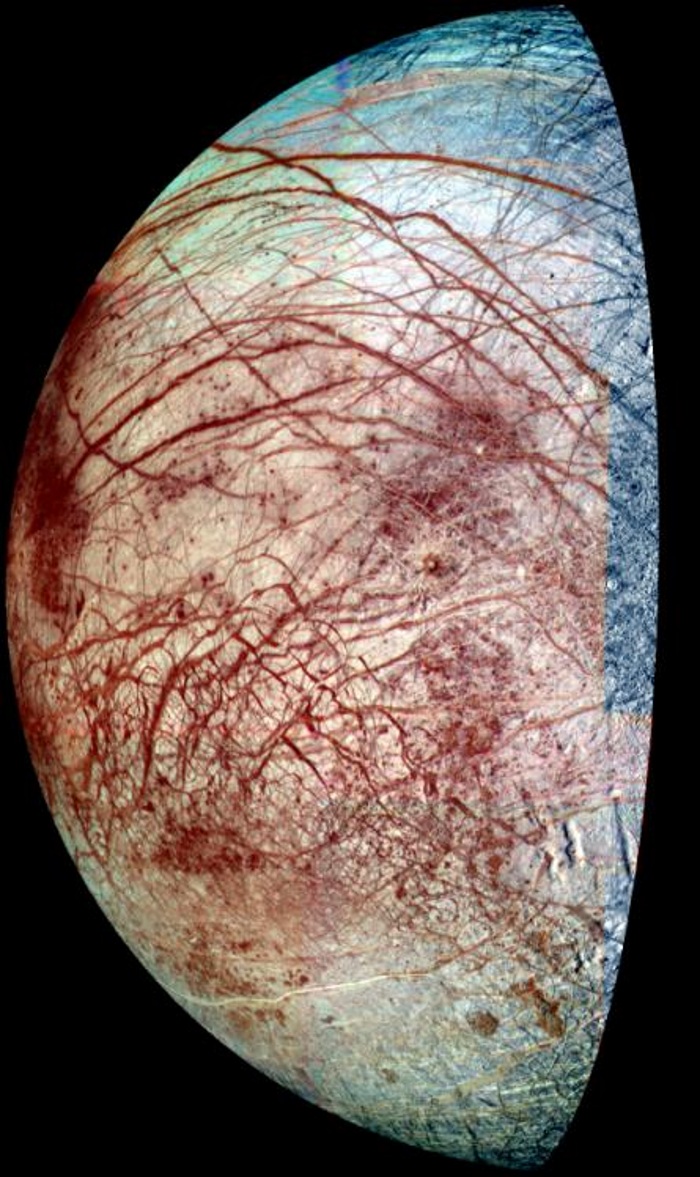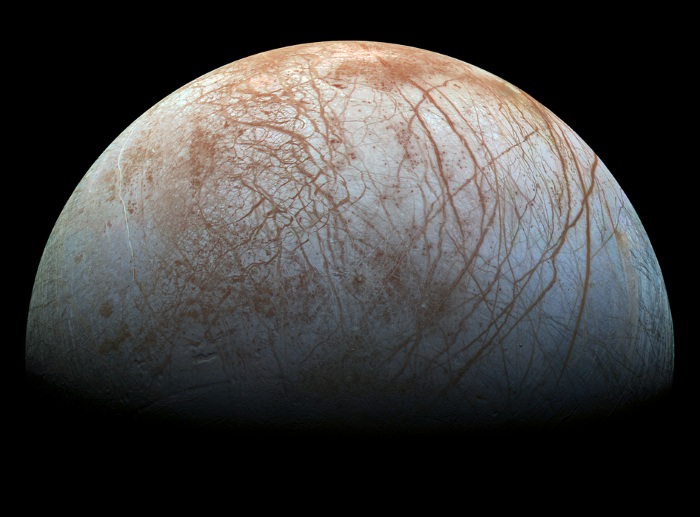An image of Jupiter’s ice-covered moon, Europa, was originally taken back in the late 1990s by NASA’s Galileo spacecraft. For many, it was a major technological achievement — the fact that the Agency could send a piece of technology so far into outer space and it could send back to Earth images of planets and space bodies at a closer distance than anything seen before was, to say the least, awe-inspiring.

While there was a lot to celebrate, one thing the image was lacking was clarity. You see, the mosaic of images published in 2001 featured colors that had been strongly enhanced. To many, Europa looked and felt fake.

Modern color imaging techniques have advanced so much in the last decade that NASA felt it would serve the public well to see a new image of Europa, with colors that are more closely approximate to what the human eye would see; a near-natural look at the moon, if you will.

NASA explains on its website how it achieved this new image:
Images taken through near-infrared, green and violet filters have been combined to produce this view. The images have been corrected for light scattered outside of the image, to provide a color correction that is calibrated by wavelength. Gaps in the images have been filled with simulated color based on the color of nearby surface areas with similar terrain types.
For those curious, the long, curving, and linear lines are fractures in the moon’s bright ice sheet. And the variations in color across the surface represent differences in geological feature type and location (areas that appear blue or white contain relatively pure water ice, while reddish and brownish areas include non-ice components in higher concentrations).
Researchers are very interested in learning more about all of these markings as they contain information about the geological history of Europa and the chemistry of the global ocean believed to exist beneath the ice. The thinking behind the latter point is based on the Galileo mission having found strong evidence that a subsurface ocean of salty water is in contact with the moon’s rocky seafloor. If this is true, and such a body of water exists, then the cycling of material between the ocean and ice shell could potentially provide sources of chemical energy which, in turn, could sustain simple forms of life.
To learn more about Europa, check out the video below, which explains why this likely ocean world is a high priority for future exploration:
Via NASA
Advertisement
Learn more about Electronic Products Magazine





